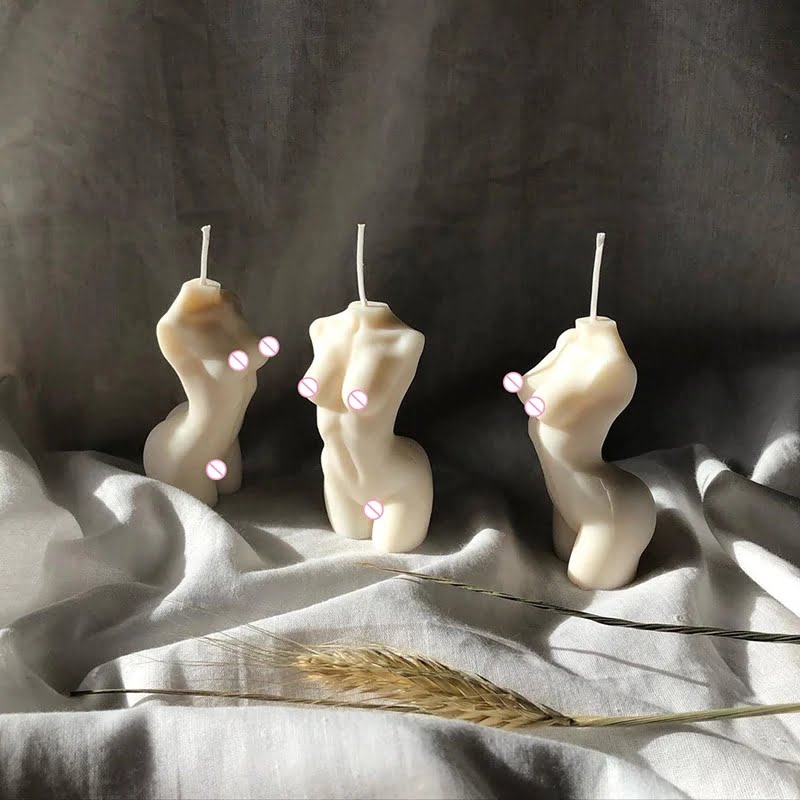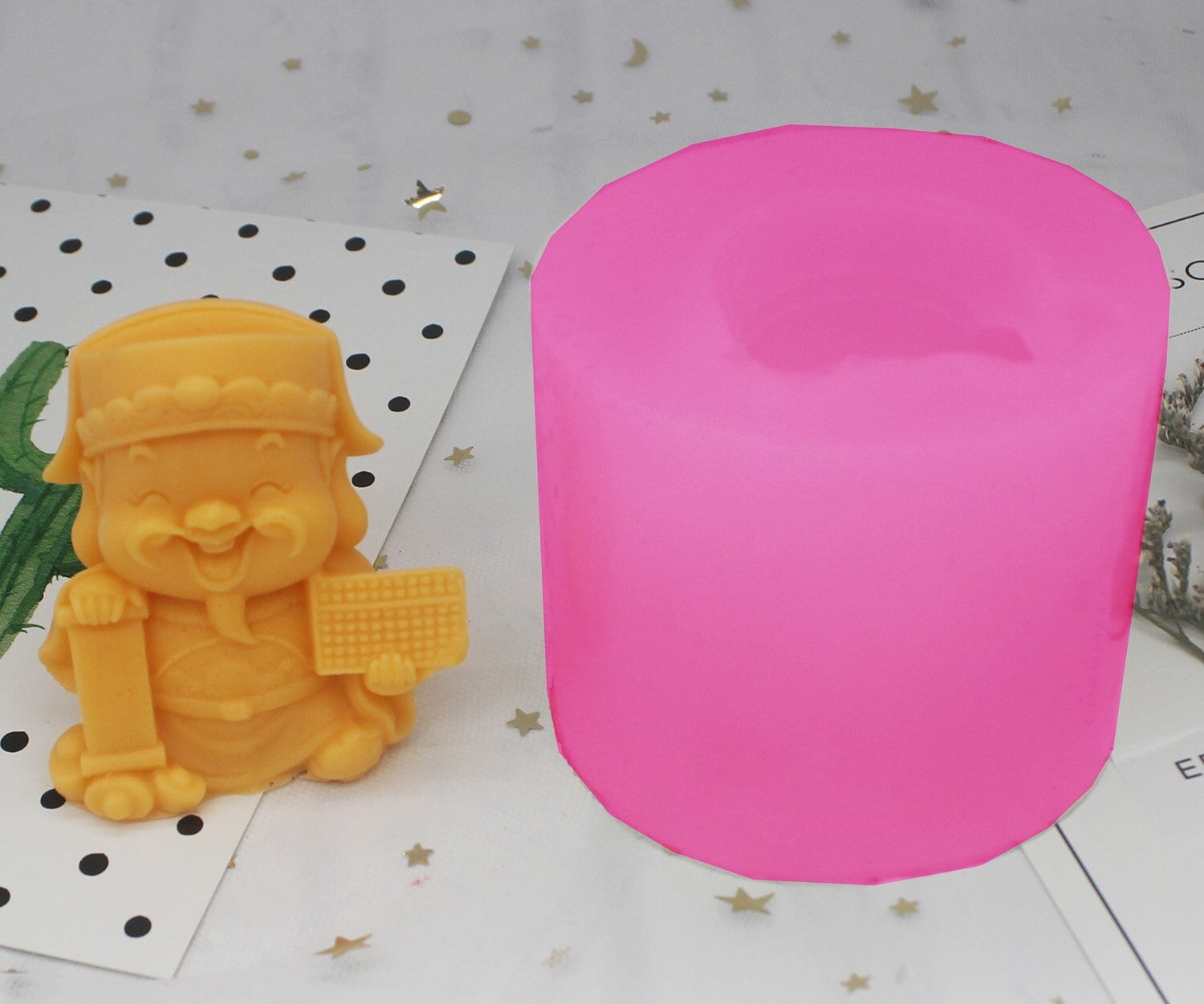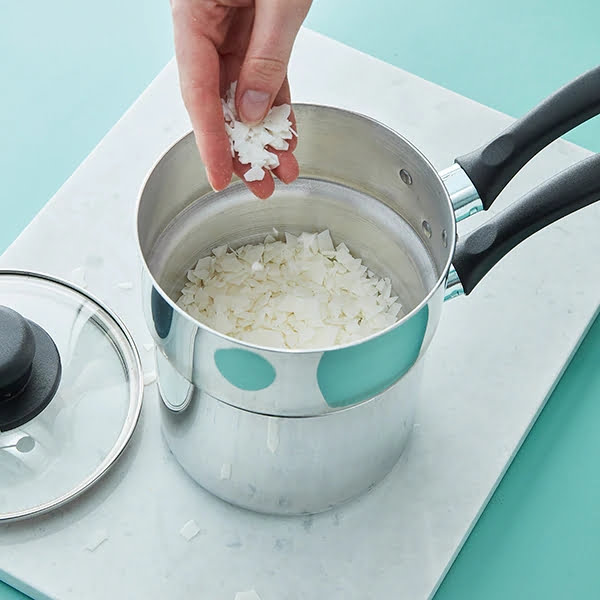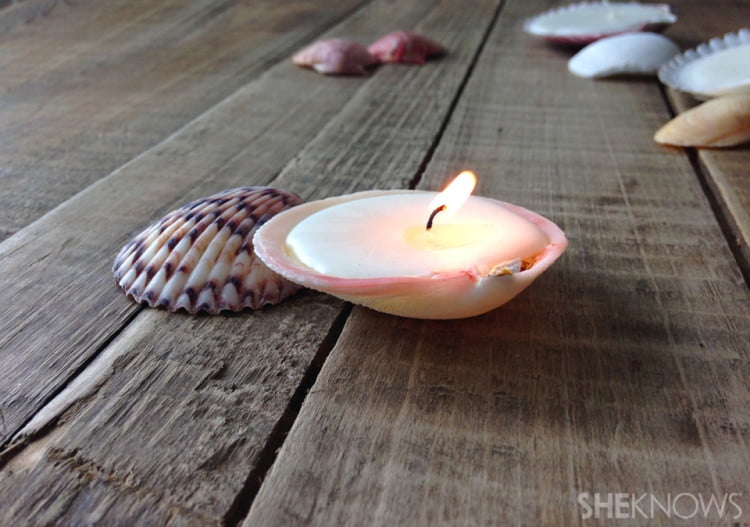Candle making is an art that involves carefully selecting the right ingredients to create a perfect blend of scent, ambiance, and aesthetic appeal. One crucial element in this process is fragrance oils, which provide the desired aroma to candles.
However, with numerous options available, it can be challenging to determine which fragrance oil is suitable for candle making. This article aims to explore the compatibility of Universal Fragrance Oil with candle making, delving into its advantages, drawbacks, chemistry behind candle making and fragrance oils, as well as providing guidance on incorporating Universal Fragrance Oil effectively.
Fragrance oils play a significant role in candle making by adding captivating scents that fill our homes with delightful fragrances. They are concentrated blends of various synthetic and/or natural aromatic compounds formulated to produce specific scents. Universal Fragrance Oil refers to a versatile type of fragrance oil that finds applications across various industries due to its wide selection of fragrances and cost-effectiveness compared to specialized candle fragrance oils.
The question arises – can you use Universal Fragrance Oil for candle making? While it may be tempting to experiment with this multi-purpose option, it is essential to examine both the benefits and potential limitations before incorporating Universal Fragrance Oil into your candle-making endeavors.
By understanding the chemistry behind candle making and fragrance oil interaction and conducting compatibility tests, you can determine if using Universal Fragrance Oil is suitable for your specific needs. In this article, we will navigate through these considerations together and provide expert insights into achieving optimal results when using Universal Fragrance Oils in your candle-making process.
Understanding Universal Fragrance Oils
Universal Fragrance Oils are a popular choice for candle makers due to their versatility and wide range of applications. In this section, we will provide a comprehensive overview of Universal Fragrance Oils, including their composition, versatility, and the different fragrance families and categories available.
Definition and Composition
Universal Fragrance Oil is a type of fragrance oil that is designed to be compatible with various products, including candles. It is composed of a blend of aromatic compounds, essential oils, and synthetic fragrances. The specific composition may vary depending on the manufacturer or brand, but they are generally formulated to ensure optimal scent throw when used in candles.
Versatility and Applications
One of the key advantages of Universal Fragrance Oils is their versatility. These fragrance oils can be used not only for candle making but also in other industries such as soap making, cosmetics, and home fragrance products. This makes them an attractive option for those who want to experiment with different types of products without needing to purchase specialized fragrance oils for each application.
Fragrance Families and Categories
Universal Fragrance Oils come in a wide variety of fragrances, categorized into different families such as floral, citrus, fruity, woody, oriental, and more. Within these families, there are further categories that capture specific scent profiles such as fresh and clean, sweet and bakery-like, exotic and spicy, or calming and relaxing. This extensive selection allows candle makers to choose from a vast array of fragrances that suit their preferences or cater to specific customer demands.
In the next section, we will delve into the chemistry behind candle making and how Universal Fragrance Oils interact with wax to create delightful scented candles.
The Chemistry Behind Candle Making and Fragrance Oils
Understanding the chemistry behind candle making and fragrance oils is crucial for achieving optimal results in scent throw and overall performance. When it comes to candle making, fragrance oils play a vital role in creating a pleasant aroma that enhances the ambiance of any space. In this section, we will explore the science behind candle making and how fragrance oils interact with wax.
Candle making involves the process of melting and combining wax with various additives to create a solid candle. The type of wax used can vary, including soy wax, paraffin wax, beeswax, or a blend of different waxes. Fragrance oils are typically added to the melted wax to infuse it with desired scents.
The interaction between fragrance oils and candle wax is based on the principles of solubility and molecular compatibility. Fragrance oils are composed of aromatic compounds, some of which are soluble in wax while others may not dissolve as easily. It is important to consider these factors when selecting fragrance oils for candle making to ensure proper scent distribution.
The compatibility between fragrance oils and candle wax also affects the scent throw, which refers to how well the fragrance disperses into the surrounding air when the candle is burning. For optimal scent throw, it is essential to choose fragrance oils that have good compatibility with the specific type of wax being used. Factors such as melting point, viscosity, and oil-to-wax ratio can all influence how well the fragrance oil integrates with the wax during the manufacturing process.
To ensure successful incorporation of fragrance oils in candle making, there are several factors to consider:
- Compatibility testing: Before embarking on large-scale production, it is advisable to conduct compatibility tests by mixing small amounts of fragrance oil with different types of candle waxes and observing their behavior. This will help determine if any adjustments need to be made before proceeding with full-scale production.
- Wax selection: Different types of waxes have varying chemical compositions and characteristics. Consider matching your fragrance oils with the appropriate wax to maximize their compatibility and achieve the desired scent throw.
- Proper measurement: Accurate measurement of fragrance oil is essential for achieving the desired scent strength in candles. Too little or too much fragrance oil can impact the overall performance and longevity of the candle’s aroma.
Taking these factors into account will help candle makers create candles that not only look visually appealing but also have a pleasant and long-lasting fragrance when burned. The chemistry behind candle making and fragrance oils is a critical aspect to consider for successful candle production.
Pros and Cons of Using Universal Fragrance Oil in Candle Making
Using Universal Fragrance Oil in candle making comes with its own set of advantages and disadvantages. It’s important for candle makers to weigh these pros and cons to determine if using Universal Fragrance Oil is the right choice for their specific needs.
Advantages of Using Universal Fragrance Oil:
Wide selection of fragrances to choose from: One of the biggest advantages of using Universal Fragrance Oil in candle making is the vast array of fragrances available. Whether you’re looking for floral, fruity, or woody scents, there are numerous options to suit every preference. This allows candle makers to create unique and captivating aromas that appeal to a wide range of customers.
Cost-effectiveness in comparison to specialized candle fragrance oils: Another benefit of using Universal Fragrance Oil is its cost-effectiveness. These fragrance oils are typically more affordable compared to specialized candle fragrance oils. For small-scale or hobbyist candle makers, this can be a significant factor when considering their overall production costs.
Potential for cross-industry applications: Universal Fragrance Oils are widely used not only in candle making but also in various other industries such as soap making, skincare products, and home fragrance products. This versatility allows candle makers to explore different avenues and diversify their product offerings beyond just candles.
Drawbacks and Limitations of Using Universal Fragrance Oil:
Possible issues with scent retention and throw: While Universal Fragrance Oils offer a wide selection of fragrances, some may not perform as well as specialized candle fragrance oils when it comes to scent retention and throw. Due to their composition and intended multi-purpose use, certain scents may not disperse as effectively or linger as long in candles.
Compatibility issues with certain candle waxes: The compatibility between fragrance oil and wax is crucial for achieving optimal scent performance. However, some Universal Fragrance Oils may not blend well with certain types of candle waxes, resulting in poor scent diffusion or discoloration. It is important for candle makers to conduct compatibility tests before large-scale production to ensure the fragrance oil and candle wax work well together.
Effects on burn time and candle performance: Universal Fragrance Oils may also impact the burn time and overall performance of candles. Some fragrance oils can accelerate the burning process or affect the evenness of the melt pool, leading to issues such as tunnelling or uneven burning. Candle makers need to carefully consider these factors when using Universal Fragrance Oils in their candle formulations.
By weighing these pros and cons, candle makers can make informed decisions about whether or not to use Universal Fragrance Oil in their candle making endeavors.
Compatibility Testing
When it comes to using Universal Fragrance Oil for candle making, compatibility testing is essential to ensure optimal results. These tests help determine if the fragrance oil will work well with the chosen candle wax, ensuring that the scent throw and performance meet expectations. Here are some important steps to follow when conducting compatibility tests:
- Choose a representative sample of candle wax: Select a small amount of the candle wax that will be used for your candles. It is important to choose a wax that closely resembles the type you will use in production.
- Divide and label: Divide the sample wax into equal portions and label each container accordingly. You can use alphabetical or numerical labels to keep track of each sample.
- Add fragrance oil: Add a measured amount of Universal Fragrance Oil to each container of wax, following the recommended usage rates provided by the manufacturer. Be sure to use a different fragrance oil for each sample if you are testing multiple scents.
- Mix thoroughly: Use a stirrer or spoon to mix the fragrance oil and wax together until they are well blended. Ensure that there are no visible clumps or streaks in the mixture.
- Let it rest: Allow each sample to sit undisturbed for at least 24 hours, allowing the fragrance oil and wax to fully integrate and adhere.
- Observe changes: After 24 hours, examine each sample carefully. Look for any signs of discoloration, separation, or other undesirable reactions between the fragrance oil and wax.
- Evaluate scent throw: Test the scent throw by gently sniffing each sample container. Note any differences in strength or intensity between samples.
- Assess performance: If desired, you can also test burn time and overall performance by lighting small samples of each candle and observing their behavior while burning.
By conducting these compatibility tests, candle makers can confidently determine whether Universal Fragrance Oil is suitable for their specific candle making needs. It is recommended to perform these tests on a small scale before proceeding with large-scale production to avoid any costly mistakes.
Remember, there may be variations in how fragrance oils interact with different candle waxes, so it’s important to test each combination individually. Additionally, some fragrance oils may perform better in certain types of candles, such as soy or paraffin wax, compared to others. Keep this in mind when selecting the right combination for your candles.
Overall, compatibility testing ensures that you achieve the desired scent throw and performance when using Universal Fragrance Oil in your candle making endeavors.
The Best Practices for Incorporating Universal Fragrance Oil into Candle Making
When incorporating Universal Fragrance Oil into candle making, there are several best practices to follow to ensure optimal results. These practices include proper measurement and proportioning, as well as exploring alternative approaches for enhancing scent throw and longevity in candles made with Universal Fragrance Oil.
Firstly, it is crucial to accurately measure the amount of Universal Fragrance Oil needed for a specific batch of candles. This can be done using a digital scale or measuring spoons specifically designed for candle making. The recommended fragrance load for candle making typically ranges between 6-10% by weight, depending on the desired strength of the scent.
Proper proportioning is also key to achieving the desired scent strength in the final product. It is important to consider the type and size of candle being made when determining how much fragrance oil to use. For example, larger candles may require more fragrance oil compared to smaller ones. It is generally recommended to start with a lower percentage of fragrance oil and gradually increase it until the desired scent strength is achieved.
In addition to proper measurement and proportioning, there are alternative approaches that can be explored to enhance scent throw and longevity in candles made with Universal Fragrance Oil. One method involves using additives such as stearic acid or Vybar to help improve fragrance retention and promote a longer-lasting scent.
Another approach is to incorporate certain waxes that have better compatibility with fragrance oils, such as soy wax or coconut wax. These waxes tend to have better scent throw compared to others like paraffin wax. It may be worth experimenting with different wax blends and additives to find the best combination for optimal scent performance.
Overall, by following these best practices for incorporating Universal Fragrance Oil into candle making, candle makers can achieve desired scent strength and improve the overall quality of their candles.
| Best Practices | Details |
|---|---|
| Accurate Measurement | Use digital scale or measuring spoons designed for candle making to measure the appropriate amount of fragrance oil. |
| Proper Proportioning | Determine the percentage of fragrance oil to use based on the desired scent strength and the type and size of the candles being made. |
| Explore Alternative Approaches | Incorporate additives like stearic acid or Vybar to enhance fragrance retention and use waxes with better compatibility with fragrance oils, such as soy wax or coconut wax. |
Frequently Asked Questions from Candle Makers about Universal Fragrance Oil
Candle making is a popular hobby and business venture for many individuals, and fragrance oils play a crucial role in creating beautiful and aromatic candles. Universal Fragrance Oil has gained attention in the candle making community due to its versatility and broad range of applications.
However, candle makers often have questions and concerns regarding the use of Universal Fragrance Oil. In this section, we will address some frequently asked questions to help candle makers make informed decisions about incorporating Universal Fragrance Oil into their candle-making process.
- Can Universal Fragrance Oil be used in all types of candles?
- Will Universal Fragrance Oil affect the burn time of my candles?
- How do I achieve a strong scent throw with Universal Fragrance Oils?
Universal Fragrance Oil can be used in various types of candles, including soy wax candles, paraffin wax candles, and even beeswax candles. However, it is essential to perform compatibility tests before using Universal Fragrance Oil with different types of waxes.
Some fragrance oils may not blend well with certain candle waxes, resulting in poor scent throw or compatibility issues. Conducting small test batches using different waxes and fragrance oil combinations will help determine the suitability of Universal Fragrance Oil for specific candle types.
The use of fragrance oil in candles can potentially impact the burn time of the candles. Some fragrance oils may contain ingredients that could reduce the burn time or affect the performance of the wick. It is recommended to carefully select fragrance oils specifically formulated for candle making to minimize any adverse effects on burn time. Additionally, proper measurement and proportioning when adding fragrance oil can help maintain a balanced composition that does not significantly alter the burn time.
Scent throw refers to how well the fragrance is released into the surrounding environment when a candle is burning. To ensure a strong scent throw with Universal Fragrance Oils, consider factors such as proper measurement and proportioning, adequate curing time for your candles, and using the recommended fragrance load for the particular Universal Fragrance Oil you are using.
Some candle makers also experiment with different wick sizes or types to optimize scent throw. It is important to note that individual fragrance oils may vary in terms of their inherent scent strength and performance, so it may require some trial and error to achieve the desired scent throw.
These frequently asked questions aim to address some common concerns related to using Universal Fragrance Oil in candle making. By understanding these considerations and seeking advice from experienced candle makers, individuals can make informed decisions about incorporating Universal Fragrance Oil into their candle-making process.
Recommended Universal Fragrance Oils for Candle Making and Where to Find Them
In conclusion, using Universal Fragrance Oil for candle making can be a viable option for many candle makers. Despite some potential drawbacks, such as issues with scent retention and throw, compatibility problems with certain waxes, and effects on burn time and performance, the advantages of using Universal Fragrance Oil cannot be overlooked.
One of the main benefits of using Universal Fragrance Oil is the wide selection of fragrances available. With a variety of fragrance families and categories to choose from, candle makers have the opportunity to create unique and appealing scents for their candles.
Additionally, Universal Fragrance Oils are often more cost-effective compared to specialized candle fragrance oils, allowing candle makers to achieve high-quality scents without breaking the bank. Furthermore, the potential for cross-industry applications makes Universal Fragrance Oils a versatile choice for those who may also want to explore other products like soaps or lotions.
To ensure successful integration of Universal Fragrance Oil in candle making, it is crucial to conduct compatibility tests prior to large-scale production. By following step-by-step instructions and interpreting test results accurately, candle makers can determine the suitability of specific fragrance oils with different types of candle waxes. This testing phase helps iron out any issues or incompatibilities before committing to larger batches.
For those interested in using Universal Fragrance Oils for their candle making endeavors, there are numerous reputable sources or online suppliers where these oils can be found. These suppliers offer a selection of top-rated Universal Fragrance Oils that are specifically suited for candle making. When choosing from this list, it is recommended to consider specific fragrance profiles, intended uses, and customer reviews to find the best fit for individual preferences.
Overall, while there may be challenges associated with using Universal Fragrance Oils in candle making, with proper testing and careful selection of oils from reliable sources, this versatile option can yield excellent results. By exploring different fragrance families and incorporating best practices into their candle making process, candle makers can create unique and enticing scents that will delight customers.
Frequently Asked Questions
Can I use universal fragrance oil to make candles?
Yes, you can use universal fragrance oil to make candles. Universal fragrance oils are specifically formulated for candle making and are designed to disperse well in the wax, ensuring a strong and lasting scent throw when the candle is burned.
These fragrance oils are often synthetic blends that mimic various scents such as fruits, flowers, spices, or other popular aromas. They come in a wide range of options and allow candle makers to create unique and appealing scents for their candles.
Is universal fragrance oil the same as essential oils?
No, universal fragrance oil is not the same as essential oils. Essential oils are natural aromatic compounds extracted from plants through methods like steam distillation or cold pressing. They retain the characteristic scent of the plant they are derived from and are often used in aromatherapy for their therapeutic properties.
On the other hand, universal fragrance oils are synthetic blends that aim to mimic different scents but do not contain any natural extracts from plants. While both essential oils and fragrance oils can be used in candle making, it’s important to understand the difference between the two and choose accordingly based on your preferences and desired outcome.
What fragrance oils are good for candle making?
There is a wide variety of fragrance oils that work well for candle making depending on your preferences and desired scent profiles. Some popular fragrance oils for candle making include vanilla, lavender, jasmine, sandalwood, rose, cinnamon, citrus fruit scents (such as orange or lemon), and fresh linen. These fragrances offer pleasant aromas loved by many individuals and are known to have good scent throw when burned in candles.
However, there are countless other options available on the market as well. When choosing a fragrance oil for candle making, consider factors such as personal preference, compatibility with the type of wax you’re using, and the specific atmosphere or mood you want your candles to create.

Welcome to my candle making blog! In this blog, I will be sharing my tips and tricks for making candles. I will also be sharing some of my favorite recipes.





